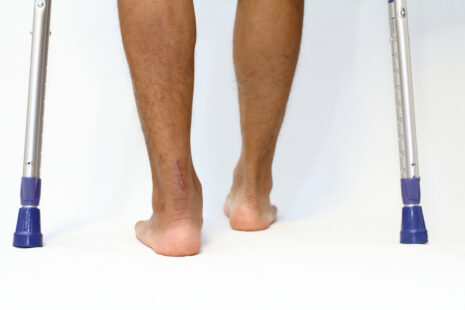Returning to soccer after an injury requires careful planning, patience, and a gradual progression to avoid re-injury and promote a safe and successful return to play.
Here are some steps to help you get back into soccer after an injury…
- Consult with a Healthcare Professional – Before returning to soccer, it’s essential to consult with a healthcare professional, such as a sports medicine physician or physical therapist, who can assess your injury, evaluate your readiness to return to play, and provide guidance on rehabilitation and injury prevention.
- Follow Your Rehabilitation Program – If you’ve undergone surgery or physical therapy for your injury, continue to follow your rehabilitation program as prescribed by your healthcare provider. This may include exercises to improve strength, flexibility, balance, and proprioception, as well as gradually reintroducing soccer-specific movements and activities.
- Start Slowly – Ease back into soccer gradually, starting with light aerobic exercise, such as jogging or cycling, to gauge your fitness level and assess any lingering symptoms or limitations. Progress to low-impact soccer drills and non-contact activities before gradually reintroducing full-contact training and game play.
- Focus on Technique and Form – Pay attention to your technique and form during soccer-specific movements, such as running, cutting, dribbling, passing, and shooting. Focus on proper body mechanics, footwork, and positioning to reduce the risk of re-injury and optimize performance.
- Listen to Your Body – Pay attention to any pain, discomfort, or signs of fatigue during training sessions or games. If you experience increased pain or symptoms, scale back your activity level and consult with your healthcare provider before proceeding.
- Build Strength and Conditioning – Incorporate strength training, cardiovascular conditioning, and agility drills into your training regimen to improve overall fitness, endurance, and resilience on the soccer field. Focus on building strength in the muscles surrounding the injured area to provide support and stability.
- Gradually Increase Intensity – Gradually increase the intensity and duration of your soccer training sessions as your fitness level improves and you regain confidence in your ability to perform. Avoid pushing yourself too hard too soon, and allow adequate time for rest and recovery between workouts.
- Use Protective Gear if Necessary – If your injury requires additional protection or support, such as a brace, compression sleeve, or taping, make sure to use it during training and games as recommended by your healthcare provider.
- Stay Patient and Positive – Returning to soccer after an injury can be challenging both physically and mentally. Stay patient with your progress, and focus on the positive aspects of your rehabilitation journey. Set realistic goals, celebrate small milestones, and stay motivated to continue improving.
- Communicate with Your Coach and Teammates – Keep open lines of communication with your coach and teammates about your injury status, rehabilitation progress, and return to play plan. Work together to gradually reintegrate into team activities and game play while prioritizing your health and safety.
Remember that every injury and recovery process is unique, so it’s essential to follow the guidance of your healthcare provider and listen to your body throughout the return-to-play process. Be proactive about injury prevention strategies, such as proper warm-up and cool-down routines, maintaining good nutrition and hydration, and getting adequate rest and recovery. With patience, perseverance, and proper preparation, you can safely and successfully get back into soccer after an injury.




